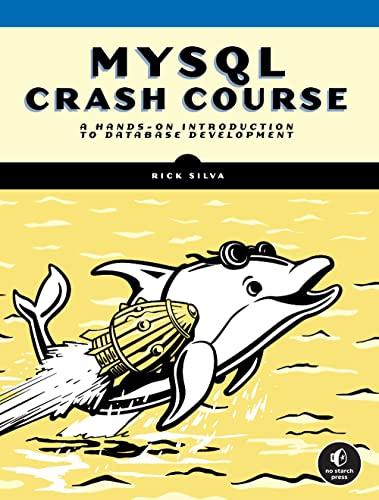Question
MyQueue - Create your own MyQueue class, be sure to use generic data types like we did with MyStack, store first/last node, make sure all
MyQueue - Create your own MyQueue class, be sure to use generic data types like we did with MyStack, store first/last node, make sure all methods execute in constant time, create a test class to show the Queue works correctly
That below is MyStack.java as an example Please keep the format like that
public class MyStack
private MyNode
private int size;
public MyStack()
{
start = null;
size = 0;
}
public void push(E obj)
{
insert(obj, 0);//constant runtime
}
public E pop()
{
return delete(0);//constant runtime
}
public E peek()
{
return get(0);//constant runtime
}
public boolean isEmpty()
{
return size == 0;
}
private String printList()
{
MyNode
String output = "[";
while(current != null)
{
output += current.toString() + ", ";
current = current.next;
}
output += "]";
return output;
}
private void insert(E obj, int index)
{
MyNode
if(index <= 0 || size == 0)//insert at start
{
if(start == null)
start = temp;
else
{
temp.next = start;
start = temp;
}
}
else
{
if(index > size)
index = size;
MyNode
for(int i = 1; i < index; i++)
{
current = current.next;
}
temp.next = current.next;//rest of list comes after new value
current.next = temp;//new value is after current
}
size++;
}
private void add(E obj)
{
insert(obj, size);
}
/*
* Test edge cases:
* 0 -> 1 -> 2 -> 3
* delete 1 (middle)
* 0 -> 2 -> 3
* delete 0 (begin)
* 2 -> 3
* delete 3 (end)
* 2
*/
private E remove(E obj)
{
if(start == null)//prevent runtime error on empty list
return null;
if(obj.equals(start.data))//first item needs to be deleted
{
E temp = start.data;
start = start.next;
size--;
return temp;
}
else
{
MyNode
while(current.next != null && !current.next.data.equals(obj))
{
current = current.next;
}
if(current.next != null)
{
E temp = current.next.data;
current.next = current.next.next;
size--;
return temp;
}
else//end of list, did not find value to delete
return null;
}
}
private E delete(int index)
{
if(index < 0 || index >= size)
return null;
else
{
if(index == 0)
{
E temp = start.data;
start = start.next;
size--;
return temp;
}
else
{
MyNode
for(int i = 1; i < index; i++)
current = current.next;
E temp = current.next.data;
current.next = current.next.next;
size--;
return temp;
}
}
}
private E find(E obj)
{
if(start == null)//prevent runtime error on empty list
return null;
if(obj.equals(start.data))//first item needs to be deleted
{
return start.data;
}
else
{
MyNode
while(current.next != null && !current.next.data.equals(obj))
{
current = current.next;
}
if(current.next != null)
{
return current.next.data;
}
else//end of list, did not find value to delete
return null;
}
}
private E get(int index)
{
if(index < 0 || index >= size)
return null;
else
{
if(index == 0)
{
return start.data;
}
else
{
MyNode
for(int i = 1; i < index; i++)
current = current.next;
return current.next.data;
}
}
}
private class MyNode
{
MyNode
E data = null;
public MyNode(E obj)
{
next = null;
data = obj;
}
public String toString()
{
return data.toString();
}
@Override
public boolean equals(Object obj) {
if (this == obj)
return true;
if (obj == null)
return false;
if (getClass() != obj.getClass())
return false;
MyNode
return data.equals(other.data);
}
}
}
Step by Step Solution
There are 3 Steps involved in it
Step: 1

Get Instant Access to Expert-Tailored Solutions
See step-by-step solutions with expert insights and AI powered tools for academic success
Step: 2

Step: 3

Ace Your Homework with AI
Get the answers you need in no time with our AI-driven, step-by-step assistance
Get Started


